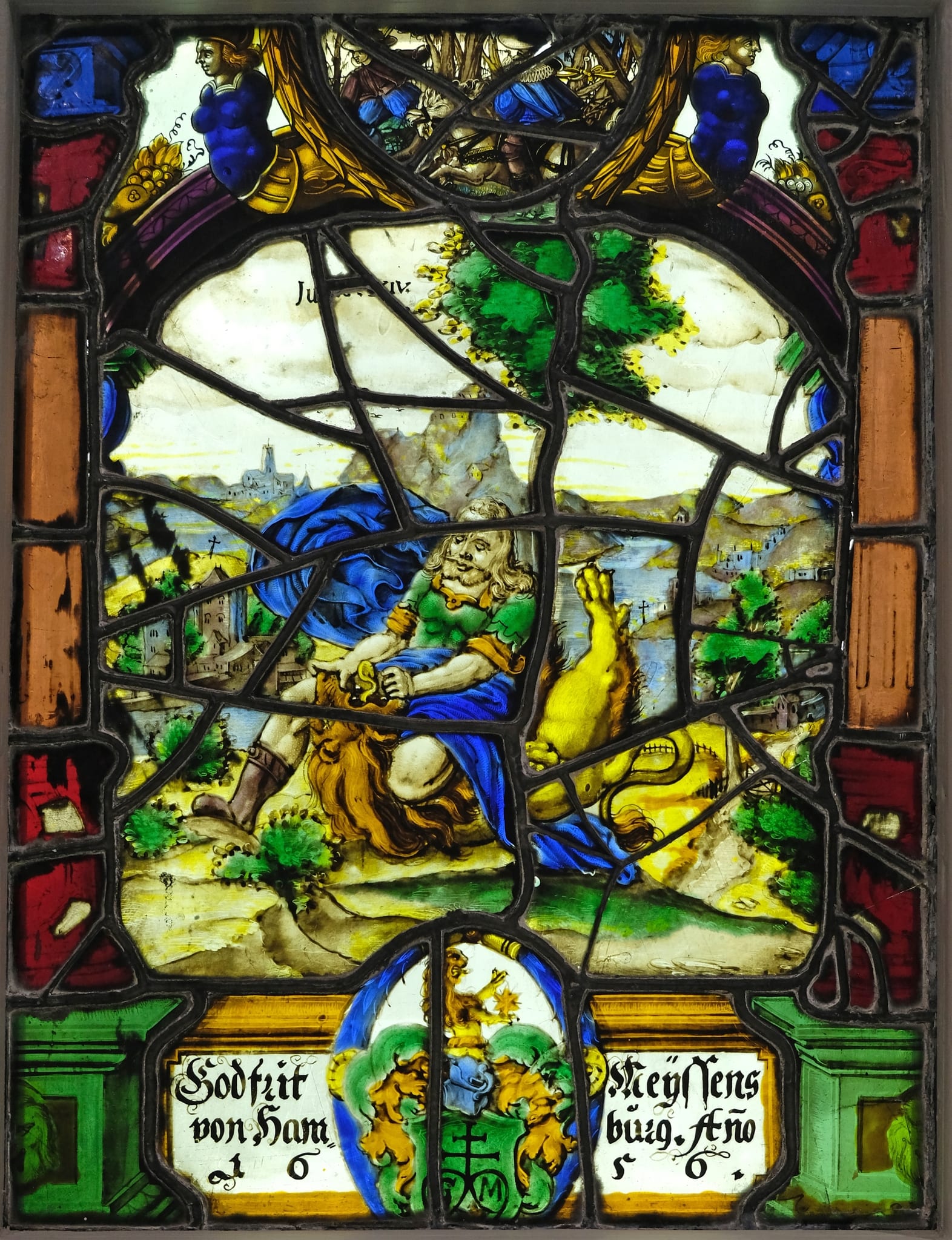Recherche
The central image is taken from the Old Testament Story of Samson: “Samson. . . tore the lion as he would have torn a kid in pieces, having nothing at all in his hand” (Judges 14:6). Samson was not frequently depicted in Early Christian art, but by the Middle Ages he was widely known through typological programs. Nicolas of Verdun’s ambo (later altarpiece) of 1181 at Klosterneuburg shows Samson killing the lion as a prototype for Christ’s Harrowing of Hell (freeing souls from limbo). Renaissance illustrated Bibles, with scenes and rhymed verses, often polyglot, spread images of Samson. The scene was included in Hans Holbein’s Icones Historiarum Veteris Testamenti, probably designed between 1523 and 1526, but only published in 1538. Multiple versions in different languages followed. Jost Amman worked in Nuremburg and in 1564 completed the Neuwe biblische Figuren dess Alten und Neuwen Testaments (Frankfurt/M, 1565). It contains a widely circulated model of Samson ripping apart the jaws of the lion (IVDIC XIIII). Although not a precise match, the stained glass shows a similar concept of Samson’s body vigorously entwined with that of the lion, exposure of Samson’s forearms and legs, and a billowing cape adding to the drama of the encounter. Samson was seen as an emblem of strength, and often female personifications of Fortitude (strength), rather than being clad in armor, held a column, a reference to Samson’s triumph when he pulled down the columns of the Philistines’ Palace (Judges 16:25-30). Thus, Samson could be a welcome emblem for a Protestant male. One assumes that the Gottfried Meyssens (Meissen, Maissen) of Hamburg was a member of the Lutheran confession.
Cited
Record Art Museum, 1963, p. 19.
Raguin, & Morgan, 1987, p. 88.
Datation
1656
Commanditaire / Donateur·trice
Meyssens (Meissen, Maissen), Gottfried
Sites antérieures
